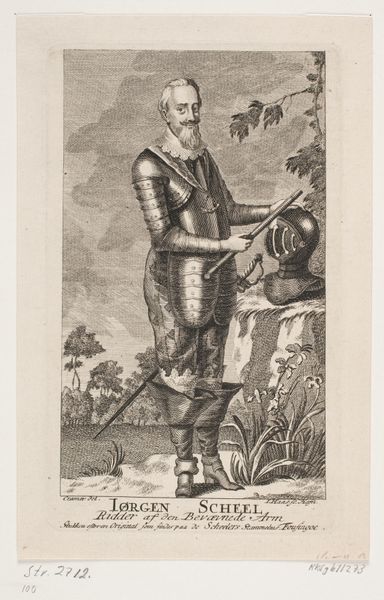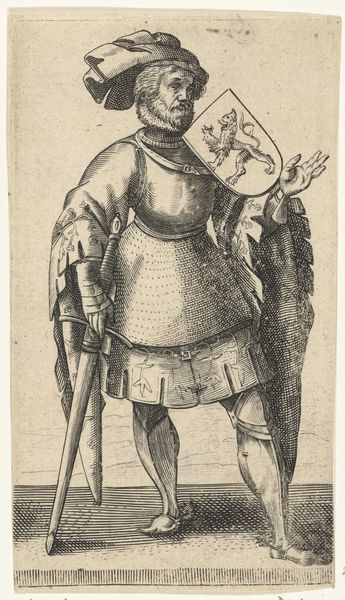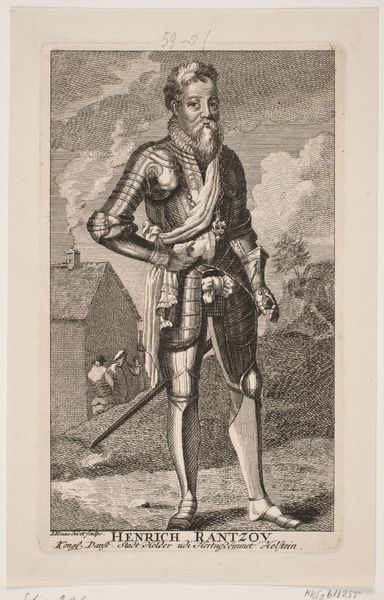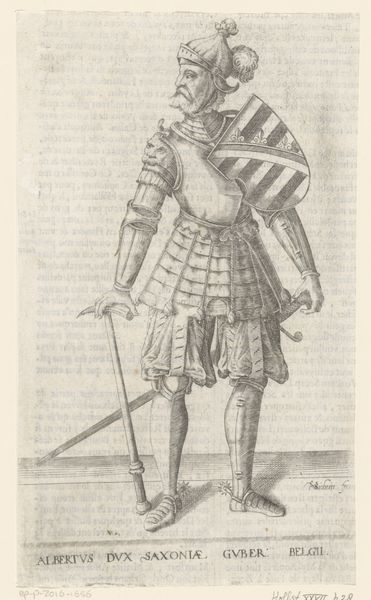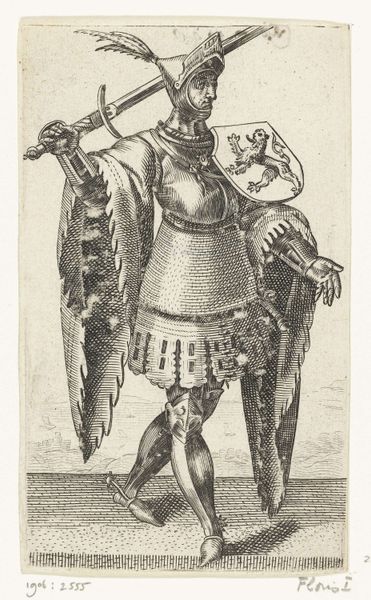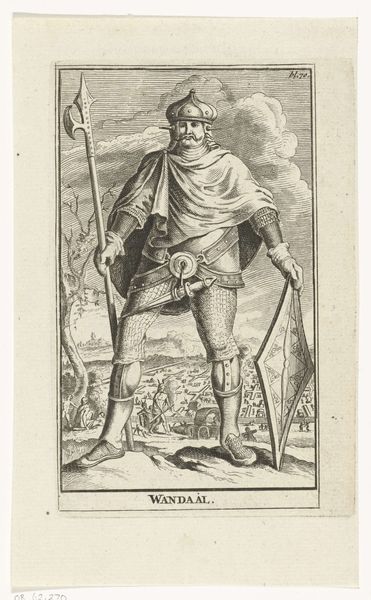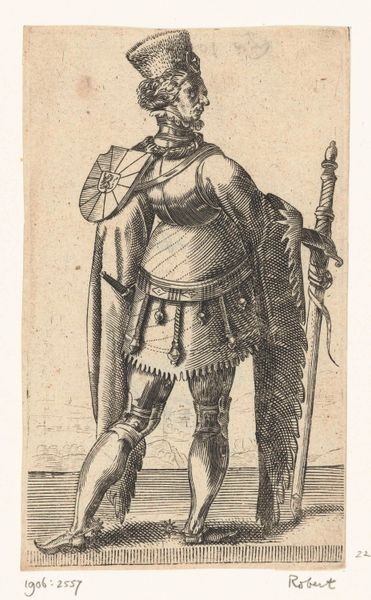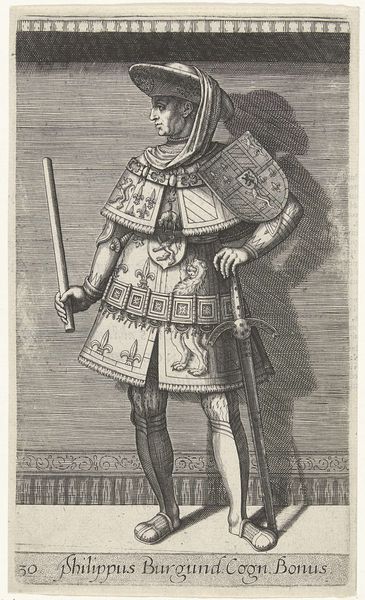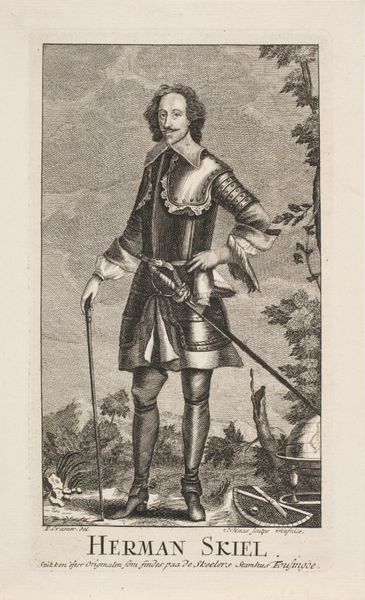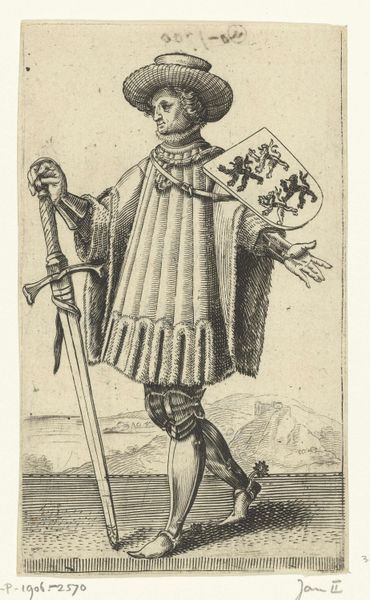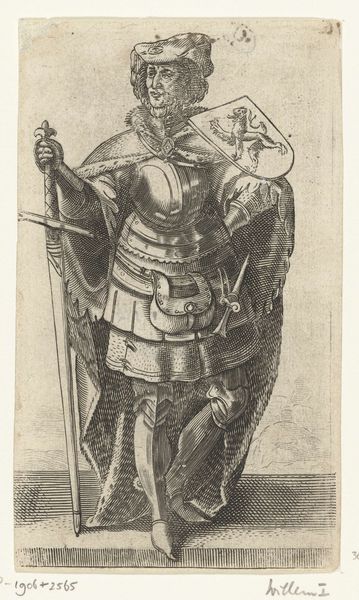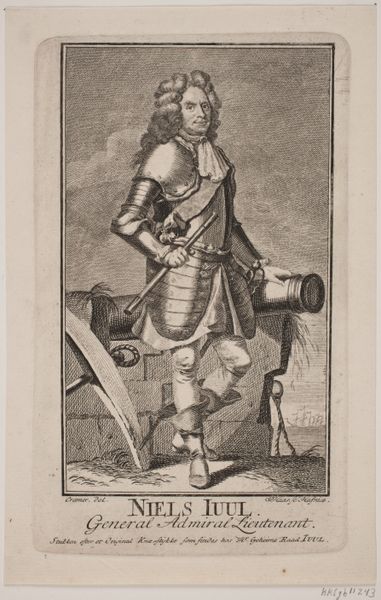
#
pencil drawn
#
toned paper
#
light pencil work
# print
#
pencil sketch
#
old engraving style
#
pencil drawing
#
pencil work
#
watercolour illustration
#
tonal art
#
watercolor
Dimensions: 187 mm (height) x 107 mm (width) (plademaal)
Editor: Here we have "Otto Skeel", a print made between 1753 and 1754 by Jonas Haas. It's meticulously rendered in what looks like pencil and watercolour on toned paper, showcasing a formal portrait of a man in armor. The level of detail in the rendering of his armor is remarkable. What can you tell us about it? Curator: What I see are the visible traces of labor: the incising of the plate, the paper production, even the mining of metals to create the sitter's armour itself. It forces us to think about production - what are the social relations required to produce such a print? Editor: That's a perspective I hadn't considered. The societal context is fascinating. What can you infer about 18th-century artistic and economic structures from it? Curator: Look closely at the image itself. Note the landscape in the background, but how flattened it is compared to the almost tactile detail of the armor. To me, this disparity signals a tension. Was Haas perhaps commenting on the evolving role of the military aristocracy versus the rise of industry and trade? How the visual effect enhances certain details while suppressing others hints at intentional choices related to patronage. Editor: So, the focus on armor, the craft, could suggest social commentary about that time's economic shifts. Did Haas use specific techniques to further this effect? Curator: Absolutely. Notice the light pencil work and shading employed to convey a sense of weight and texture in the armor. It’s not merely depiction; it's about giving the materiality a life of its own. In doing so, Haas elevates the status and value of material goods and challenges existing notions of artmaking centered on the concept of pictorial illusion. What do you make of that effect, knowing now its implications on artistic practice and social context? Editor: I now see how the choice of material is not a passive decision, but an active engagement with the prevailing social and economic climate of that era. Fascinating how the artwork material composition carries social significance beyond what appears at first glance. Thank you! Curator: Precisely. And recognizing these connections makes engaging with historical art much richer and gives context to current art production in light of these historic considerations.
Comments
No comments
Be the first to comment and join the conversation on the ultimate creative platform.

